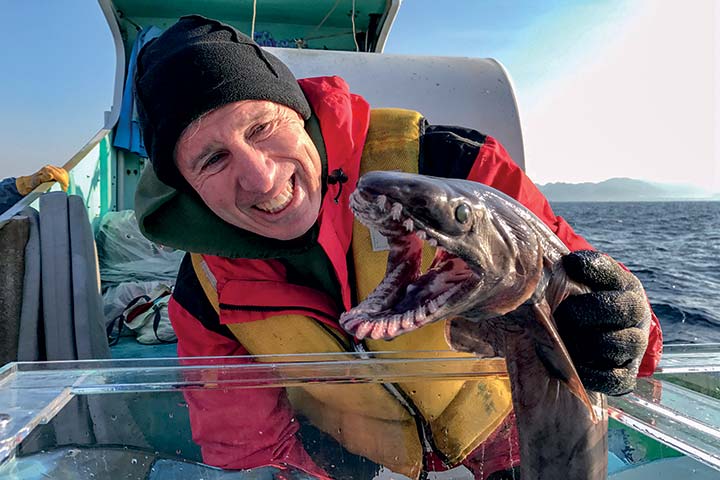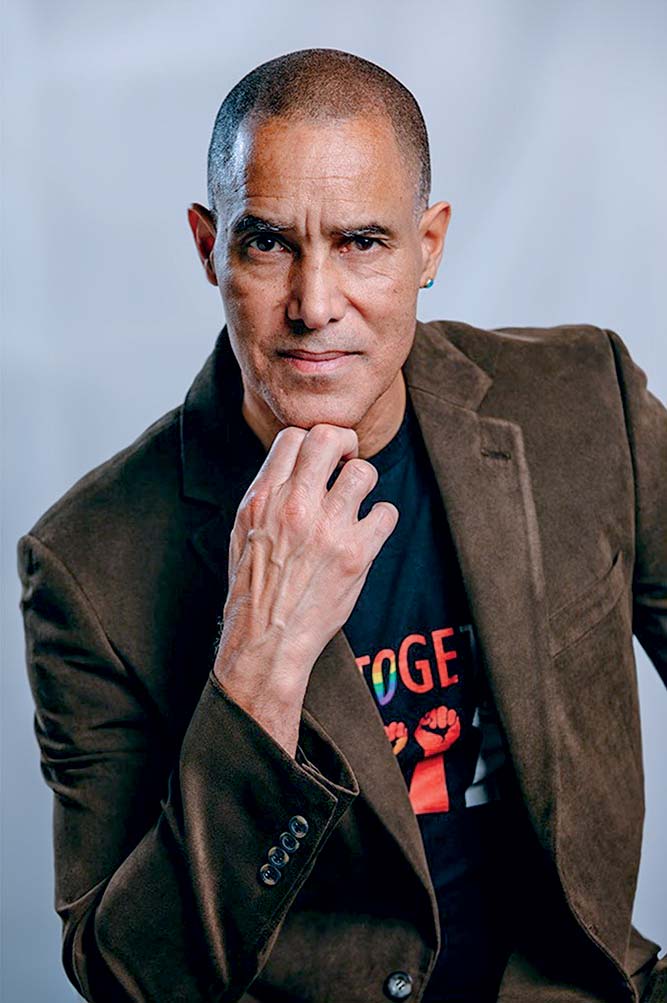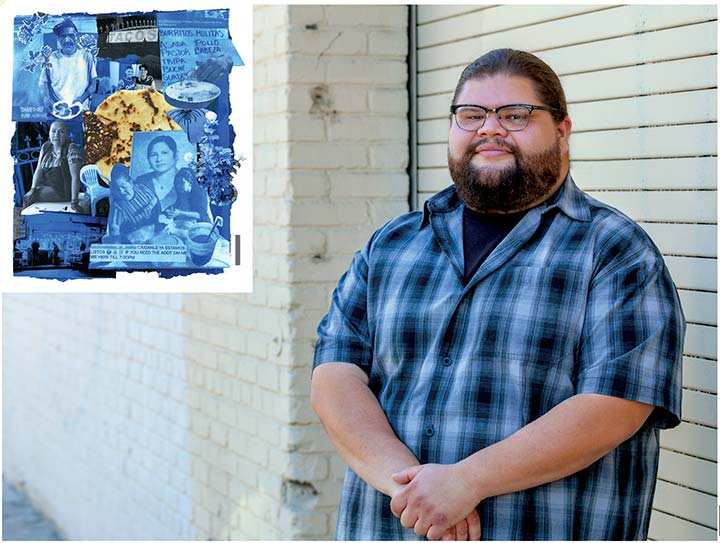Alumni Profiles
Ashley Bailey Locke: Journey to Telling Impactful Stories
.jpg)
As a senior producer for NPR and WBUR Boston’s “Here and Now,” a news magazine program, Ashley Bailey Locke (‘10, Journalism) is living her dream of telling impactful stories. Catching the journalism bug early, she wrote inspirational stories about girls in male-dominated auto body shop classes and teachers who survived cancer for her high school newspaper.
At Cal Poly Humboldt, Bailey Locke honed her storytelling skills at the student newspaper, The Lumberjack and later, student-run radio station KRFH.
In a radio news production class, Bailey Locke learned to transform long news articles into succinct segments on the radio and learned to edit audio—skills she took with her to public radio internships in Los Angeles and to her current job at NPR’s “Here and Now.”
“I walked away from Humboldt with dozens of news clips in my portfolio to show. Humboldt is a community-minded space where everyone wants to help each other succeed,” Bailey Locke says. “My time at Humboldt was an experience that I probably wouldn’t have had at a bigger institution.”
Today, Bailey Locke records and edits audio used on air, writes scripts for hosts, and vets, finds, and books guests for the program. She’s responsible for ensuring the host has all the information they need to tell meaningful stories.
She produces dynamic stories that shine a light on childcare and education issues, prioritizing points of view from women and underrepresented groups. Bailey Locke hopes her work as a producer creates more equity in the news stories people listen to, which informs the decisions they make in their lives.
“Young people are always watching and listening. When they see women and women of color treated with respect and consulted as experts in the news, it shows that their voices and the issues impacting their lives are urgent. They matter.”
Dave Ebert: ‘Lost Shark Guy’ Explores the World for Mysterious Sharks

A cup of coffee with a professor from the Telonicher Marine Lab changed everything for Dave Ebert (’81, Zoology). The soon-to-be graduate from Cal Poly Humboldt knew he wanted to travel the world and study sharks since grade school.
During coffee, Professor Emeritus of Zoology John DeMartini, who mentored Ebert during his undergraduate degree, advised him to pursue a master’s degree if he wanted to study sharks while traveling. Ebert took DeMartini’s words to heart and pursued a master’s in Marine Biology at Moss Landing Marine Laboratories on the Monterey Bay and earned a Ph.D. from Rhodes University.
Ebert is now known as the “Lost Shark Guy” for his work discovering and documenting little-known or unknown sharks, like the enigmatic ninja lantern shark and the giant megamouth shark. He has visited six continents and more than 35 countries. He has discovered and named more than 50 new shark species.
He’s a regular on the Discovery Channel’s Shark Week series “Alien Sharks,” the BBC, and the National Geographic channel. He has authored 30 books and over 500 publications, including Sharks of the World, and hosts “Beyond Jaws,” an informative “all things shark-related” podcast.
Ebert has made a career out of researching overlooked shark species in the order Chondrichthyes.
“You have all these species that are being fished in many parts of the world,” he says. “One species hasn’t been seen since 1934 and was declared extinct upon being formally named. I never look for new species; I find what’s there.”
Along with his ongoing research, Ebert is the Director of the Pacific Shark Research Center, which is part of the Moss Landing Marine Laboratories at San Jose State University. He is currently a scientific advisor for the Food and Agriculture Organization of the United Nations, among other titles.
Ebert remembers that cup of coffee with Professor DeMartini and the guidance and support he received as an event that changed the trajectory of his life.
“Humboldt was my launching point for the rest of my career. I tell students interested in the natural world: it’s a great place to start.”
Eddie Pate: Amplifying the Importance of Diversity, Equity, and Inclusion
.jpg)

When a small pebble is dropped into a still body of water, it creates a small ripple. When another pebble is dropped, it creates another small ripple. However, when these small pebbles are constantly thrown into the same still body of water, they create waves, movement, and stronger currents, eventually changing the water’s flow.
For Eddie Pate (‘88, Wildlife, ‘93, M.A. Sociology), dropping a continuous pebble of intentional inclusion, diversity, and equitable (IDE) actions gradually changes the flow of systemic inequalities for a more inclusive environment for underrepresented people.
“Diversity happens sustainably over time by dropping a pebble,” Pate says. “It’s the aggregation of all those little pebbles—or little systemic wins—that leads to systemic change, and that’s how you sustainably drive diversity efforts.”
Pate worked with companies like Microsoft, Starbucks, and Amazon to drive their inclusion, diversity, and equity efforts.
Pate’s journey toward IDE work was very personal. As a biracial man, Pate says he had this gnawing feeling about how social and racial inequities played a role in his family’s life.
“I always had this feeling of having a dilemma that the world wasn’t fair, the world had barriers and obstacles and created disadvantages for groups,” Pate says, adding that it was vital for him and his family to understand who they are culturally.
This “gnawing feeling” came to Pate at a time in his life when he wanted to continue his education and acquire a master’s degree. With the support and encouragement of Cal Poly Humboldt Sociology Professor Emerita Betsy Watson, Pate studied comparative race and ethnic relations at Cal Poly Humboldt’s Sociology department, where he readied for the University of Washington’s doctoral program.
“I felt very prepared to move on to graduate school and a Ph.D. program and have the dialogues, interactions, and understandings at those programs because of the diverse writings and strong faculty members at Cal Poly Humboldt like Betsy Watson pushing us like crazy,” Pate says.
Now partly retired, Pate is an inclusion and diversity consultant and executive coach, teaching people how to achieve inclusive, equitable, and diverse cultures as leaders in the workplace.
Felix Quintana: The Picture of Success

The quiet feel of Cal Poly Humboldt, along with its nearby redwood forests and rugged coastline, was a sharp contrast to the fast-paced Southern California streets where Felix Quintana (‘14, Art) grew up.
Those streets, including some in his hometown of Lynwood, are prominent elements in Quintana’s photography, which have gained significant attention from the Los Angeles Times, NPR, and KCET, Los Angeles’ PBS station.
Street-front businesses, heavy traffic, and the occasional pedestrian dominate the cyanotype images. There is not a redwood tree or a hint of coastline to be found. Yet, Quintana, 32, says Humboldt greatly influenced his artistic development and was an important part of his life experience.
Quintana’s art transformed when he was introduced to an artist who used Google Street View photographs. Exploring his Lynwood neighborhood digitally, Quintana stumbled upon an image featuring his father driving his truck, instantly captivating him.
“I fell in love with Humboldt. It was a reflective space where I could work on figuring out my identity,” says Quintana.
His altered images translate the street-view photographs into cyanotype, accenting them with scratched white pencil-thin lines, often giving the pieces a feel of rotoscope animation.
Quintana uses a photographic technique of painting with light, a process he learned at Humboldt. He enhances his images using Photoshop and incorporates various elements from abstract shapes to imaginative compositions, creating visuals that transport viewers to alternate realms.
The Oakland Museum of California recently acquired two of his pieces, while one of his light-painting images is included in the Altamed Foundation art collection in Southern California. Quintana’s light painting “Three Figures in Motion” received the President’s Purchase Prize at the 2014 Graduate Arts Exhibition and is now part of the Cal Poly Humboldt Permanent Collection.
“Humboldt prepared me well,” he says. “I came out of the program ready for the next phase. When I came back to L.A., I was able to appreciate it more, how beautiful and complex it is. It gave me a new perspective.”